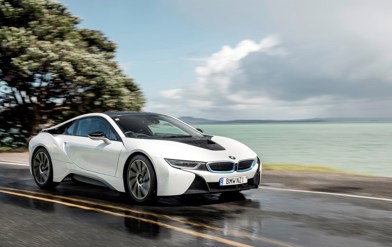The Ssangyong Korando has come a long way since the heady days of the 1980s: from a clumsy Jeep homage to a decently sophisticated medium-sized crossover-SUV.
Fun fact, Korando is Korea’s longest-running model name (since 1983). Another even-more-fun fact: the “Korando” name is a contraction of “Korea can do”.
Seriously.

Anyway, Korando has come along in leaps and bounds and the fourth-generation model makes the biggest advance yet. It’s completely new: platform, powertrains and a first-time suite of driver-assistance technology.
As before, there’s a choice of 2WD petrol (in two specifications) and 4WD diesel.
There’s a downsized 1.5-litre turbo engine for the former and another new 1.6-litre unit for the latter.
Read more: Korean colossus tested - SsangYong's Rhino XL ute is a gigantic challenger
The petrol might be down in capacity, but it’s well up in power and torque: the 1.5 has gained an impressive 20kW/83Nm over the old 2.0. The diesel has actually dropped 29kW/36Nm, but peak torque is now produced at a lower engine speed: 1500rpm.
Although the combined fuel economy of the petrol has pretty much held station at 7.7l/100km (8.0 for the previous car), the diesel is much more frugal at 6.3 (previously 7.3).

The new Korando is also cheaper — mostly. At $31,990 the 2WD Sport is $1000 cheaper than the previous model.
The more lavishly equipped 2WD Limited — that’s the one you see here — has increased $1000 to $35,990, but it comes with a lot of extra technology (more about that in a minute).
The 4WD diesel is $39,990 — a whopping $4000 drop over the old car. It’s officially SPR specification, but powertrain aside it essentially has the same kit as the Limited.

We’ve spent some introductory drive time in the petrol Limited. In city motoring it’s hard not to be impressed by the 1.5-litre powertrain’s sheer perkiness: the engine comes on strong and the throttle is surprisingly sensitive, even in the standard drive mode.
The little petrol-turbo is certainly lively enough to get the front wheels spinning on damp or loose surfaces, before the traction control has the chance to do its thing.
It’s less responsive at open-road speeds, where the small-capacity engine can get a little gruff and breathless in quick motorway lane-changes or overtaking manoeuvres. The ride’s firm — although not what you’d call fussy — in urban running on the Limited’s 18-inch wheels, but feels nicely composed at higher speeds.

Perhaps the Korando’s biggest advance is in driver-assistance technology. In Limited and SPR forms it picks up Adaptive Cruise Control, Lane Departure Warning, Front Vehicle Start Alert, Driver Attention Alert and Safety Distance Alert.
The adaptive cruise in particular brings the Korando right up with the latest tech as it’s a full stop-and-go system, although it’s at its best on the motorway rather than in traffic. In stop-start commuting, progress is staccato to say the least.
So there’s some detail stuff that dulls Korando’s sheen. But it still impresses for its grown-up qualities: it’s well-built, spacious and pretty distinctive-looking in a sea of SUV boxes. Quite a bit of Volkswagen influence in the chromework, the tail-light illumination and the feature “grilles” across the dashboard, but nicely executed all the same.

Like it or not, because this type and size and vehicle is so very popular, buyers tend to categorise models as “obvious” and “other”. It’s unlikely the twin-dragon brand will tempt Toyota RAV4 or Mazda CX-5 people away from the relative safety and well-known qualities of those brands, but the pricing, modernity and specification surely makes it a tempting mid-size rival for smaller SUVs like the Toyota C-HR ($32,990-$38,490) or Mazda CX-3 ($31,995-$41,695).
If you shop in a regional state of mind you mind consider Korean alternatives like the Kia Sportage and Hyundai Tucson. But maybe the one that Korando will really knock doorhandles with is Chinese brand MG’s similarly impressive new HS: same SUV-size, same price bracket ... and also a 1.5-litre turbo.
To view SsangYong vehicles listed for sale on DRIVEN, click here













